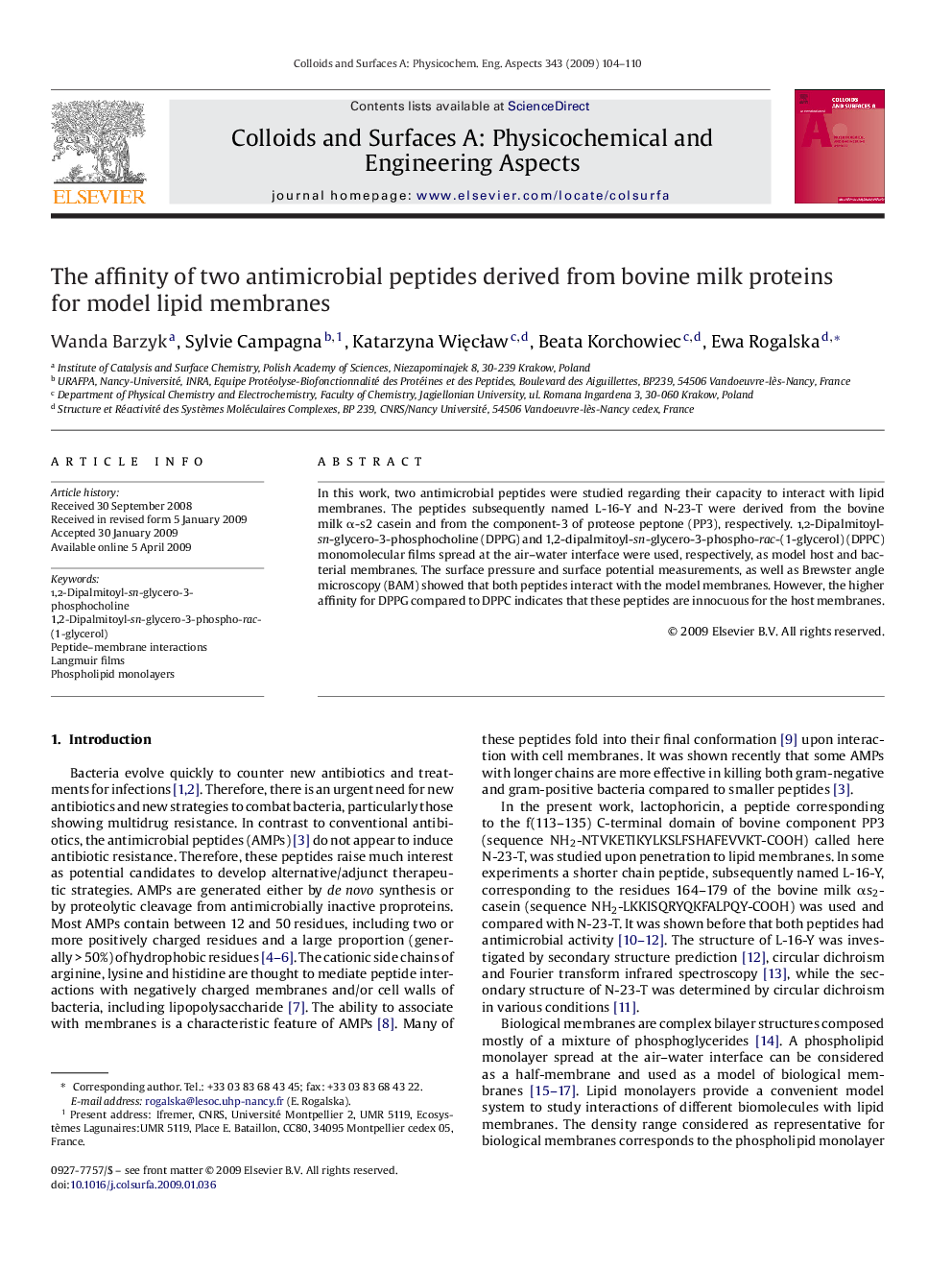| Article ID | Journal | Published Year | Pages | File Type |
|---|---|---|---|---|
| 595939 | Colloids and Surfaces A: Physicochemical and Engineering Aspects | 2009 | 7 Pages |
In this work, two antimicrobial peptides were studied regarding their capacity to interact with lipid membranes. The peptides subsequently named L-16-Y and N-23-T were derived from the bovine milk α-s2 casein and from the component-3 of proteose peptone (PP3), respectively. 1,2-Dipalmitoyl-sn-glycero-3-phosphocholine (DPPG) and 1,2-dipalmitoyl-sn-glycero-3-phospho-rac-(1-glycerol) (DPPC) monomolecular films spread at the air–water interface were used, respectively, as model host and bacterial membranes. The surface pressure and surface potential measurements, as well as Brewster angle microscopy (BAM) showed that both peptides interact with the model membranes. However, the higher affinity for DPPG compared to DPPC indicates that these peptides are innocuous for the host membranes.
